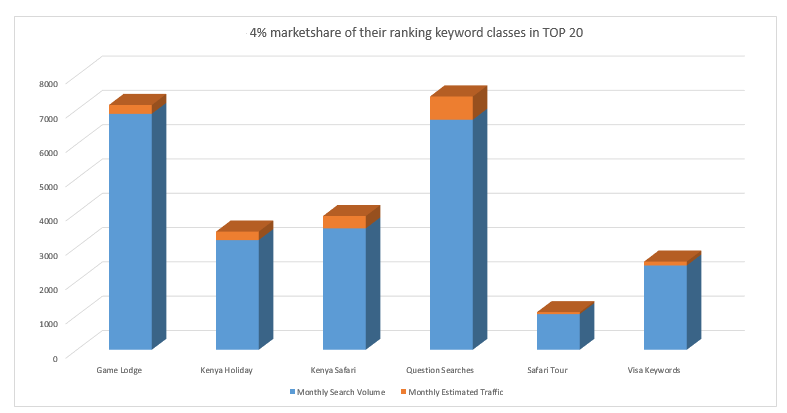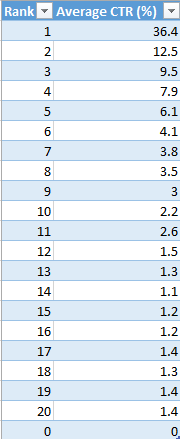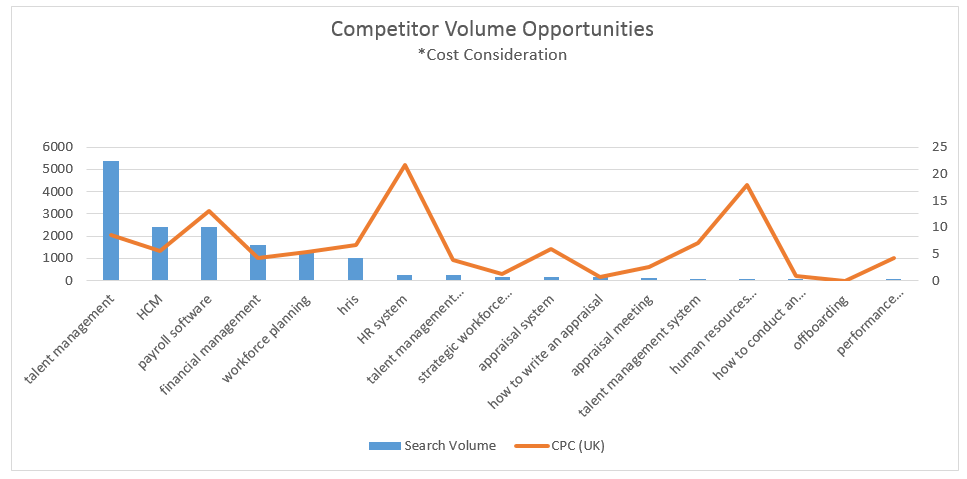Top 5 reasons why market share is an important metric in SEO
You’ve probably noticed the recent changes to Google’s SERP layout has made it more difficult for your business to get seen in search results. With more real estate going towards paid advertising and with features such as news, images, videos, local maps, the Knowledge Graph, featured snippets etc., if you haven’t already been trying new ways to gain visibility, there’s no excuse now.

This can be done successfully by monitoring your market position, so you’re able to measure where you are in relation to the competition and make the necessary changes to get where you need to be.
By only focusing on internal or vanity metrics, you have no real understanding of how you’re performing compared to your competitors, as your achievements are isolated in your own objectives and business goals. This prevents you from seeing the value of your marketing more broadly within your market.
How to understand your market share
We’ve been helping our clients understand their market share and achieve better results by performing in-depth research to analyse the potential traffic they could be receiving based on where they and their competitors rank on Google.

In order for us to understand market share, we have to calculate your ‘Share of Voice’.
What is ‘Share of Voice’?
Share of voice (SOV) is a way of measuring an amount of advertising presence or strength for a particular brand or product, or essentially: how much is our brand or product talked about compared to our competitors? It’s sometimes tricky to get a completely accurate, as we can only estimate how much your competitors are paying for advertising, or the amount of clicks they receive based on ranking position etc.
With SOV, firstly you need to be aware of what keywords you and your competitors are ranking for and the value these can bring to your business. We recommend using tools such as SEMrush, Search Metrics, Search Console and reviewing all the keywords each business is appearing for in the top 10-20 positions, depending how deep you want to go.

Next, through grouping the keywords into similar themes you will then have a better understanding of the types of keywords you can rank for and the opportunities these can provide. You can also estimate how much potential traffic you’re receiving based on the estimated click-through rate of your organic ranking position for a particular keyword. There are many case studies about this, but they typically don’t vary much and are similar to the below.

You can continue deeper analysis from here, but this will get you started.
Why market share is important
Once you have the data to review your market share you gain substantial insight that can help your marketing. Here are our top 5 reasons why:
1. Understand the market better and see what your competitors are doing
This is massive. You’ll see the performance of both you and your competitors and will be able to benchmark your activity. You can identify common keyword themes and maybe even drill it down to specific keywords. This can be used to inform all your marketing and any future campaigns. For example, if a particular theme is strong, are you ranking for a diverse and wide range of keywords that will enable you to compete within this space? Are you ranking for keywords that your competitors are weaker on? If so, think about what can you do to maximise this opportunity and ensure your share of voice dominates the market.

2. Identify new opportunities
You may come across themes your competitors are ranking for that you are not. Not all of them will be relevant and this is important to note in itself. You can be so swept up in what your competitors are doing, it can be easy to forget about your own USPs, what you offer and that you may not be providing exactly the same products or services.
However, where you do find your competitors have a higher share of voice in particular theme, ask yourself – is this relevant to me? What kind of keywords are they ranking for? What can I do to improve my own market position? This can be a great way to identify new topics and content you need to create or the potential untapped short or long-tail keywords can have on your business.
3. Quantify the impact of your strategies and tactics
Understanding your market position can also help you measure your visibility before and after campaigns or focused ongoing marketing activities. It gives you a benchmark of what works and what doesn’t and can offer direction in how you can be more effective for future campaigns.
4. Ask questions on performance you didn’t think to ask
Marketers love data. When you have real stats in front of you, it can put you in a position where you can ask meaningful questions and dig a little deeper to fully comprehend your performance. You might find information you weren’t expecting, and then you can ask questions about the value of this and how it can be used to enhance your marketing efforts.

5. Respond to emerging trends and judge total market growth or decline
If you continuously update your research and add new competitors, you’ll also keep on top of emerging trends. You’ll be able to see whether some keywords are less effective compared to others and you can be proactive in making changes to your marketing plan. Make sure you complement this with other activity, such as looking at Google Trends, so you can capitalise on what your consumers are searching for and responding to.
If you need help with understanding your share of voice or market position and improve your SEO visibility, don’t hesitate to contact our Generate UK team.